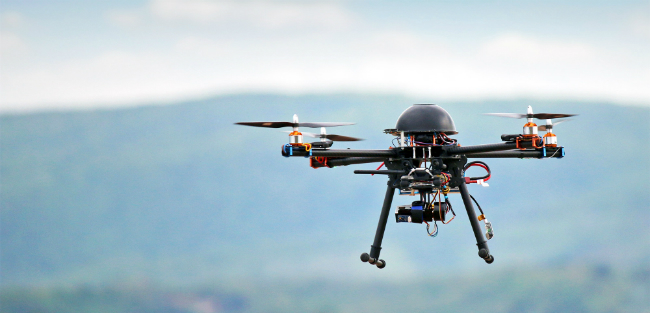Almost 3 million drones are projected to be produced in 2017, 39% more than in 2016.
STAMFORD, Conn. — The global market revenue for unmanned aerial vehicles (UAVs) is forecast to reach $6 billion by the end of the year and surpass $11.2 billion by 2020, according to a market research report by Gartner.
“The commercial and personal drone markets are increasingly overlapping, as lower-priced personal devices are being used for commercial ventures,” Gerald Van Hoy, senior research analyst at Gartner, said in a press release. “Personal drone vendors are now aggressively trying to position themselves in the commercial market. Recent technological advances blur the lines, allowing personal drones to be used in many special-purpose applications such as surveillance, 3D mapping and modeling.”
Nearly 3 million drones will be manufactured in 2017, which marks a 39% increase from production numbers in 2016, the report said. And, while the two markets are overlapping, consumer and commercial drone customers still have very different needs.
On the consumer side, personal drones are growing in popularity, the report said. One of the biggest drivers of this growth is the drone as a complementary product to one’s smartphone, as it can take pictures or provide other forms of entertainment. Gartner’s report noted that these drones typically cannot fly for longer than one hour, and usually cost less than $5,000.
Commercial drones, or drones that are used for enterprise applications, have a smaller overall market, but a higher price point compared to their consumer counterparts, the report said. More countries are now defining their regulations for drones, and companies are beginning to test how they can apply the technology in the market.
According to the report, commercial drones normally have a higher payload, longer flight times, and redundant sensors and flight controllers to make them safer. They are more specialized to a function, such as mapping, delivery or industrial inspection, so prices vary according to these requirements.
While the agriculture vertical was expected to be the breakout success for commercial drones, the cost and potential ROI have led to slower-the-expected growth. By Gartner’s prediction, these challenges mean that drone adoption in agriculture will likely top out at 7% through 2020.
The use of commercial drones for industrial applications is growing, and hasn’t been impacted by regulatory hurdles that were initially expected, according to the report. Gartner forecasts these applications could make up 30% of the overall commercial market for drones.
And despite a lot of hype around delivery drones, the use case isn’t proving worthwhile.
“Delivery drones will be mired in logistical issues like the time needed to return a drone to its origin point after delivery, and will amount to less than 1 percent of the commercial market by 2020,” Van Hoy said. “We expect that delivery drones will begin finding a niche in business-to-business applications first, particularly for internal services within one company where logistics will not be such a big factor.”
by SSI Staff
Source: Security, Sales & Integration, February 2017

